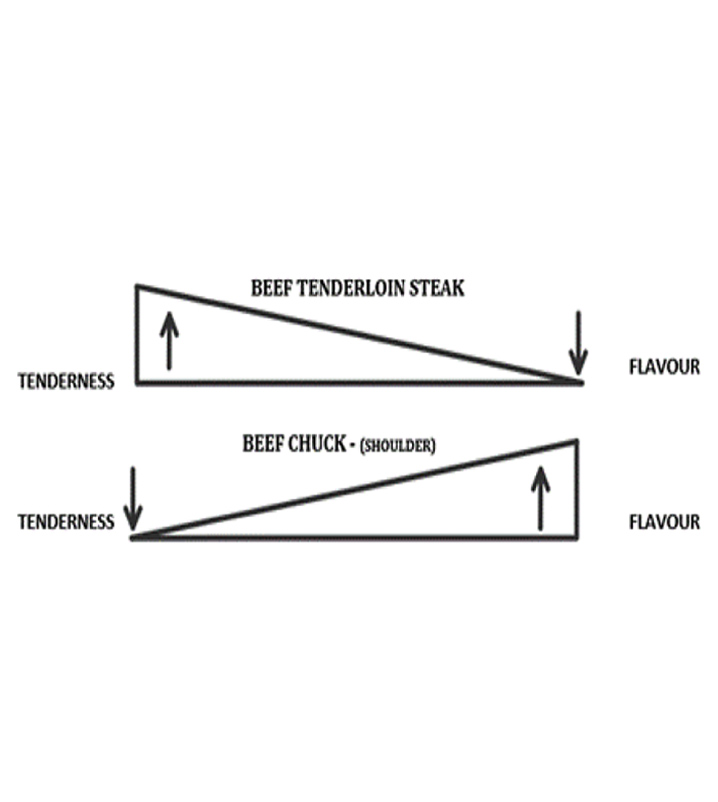AND HOW TO USE THEM
LEARN WHERE MAJOR CUTS COME FROM
One of the most common questions that come from our customers is regarding where the significant cuts come from on the cow and how to utilize them best. This handy guide will show you the location of major beef cuts, like chuck, rib, loin, and brisket. You'll also discover which cuts are considered the best and the most reliable ways to cook each one.
Cooks who understand the difference between tough and tender cuts know a trade-off between tenderness and flavor. If you imagine a scale; one end being tenderness and the other end being flavor; there is usually a compromise between the two—the more tender the cut, the less natural flavor, and vise versa.

